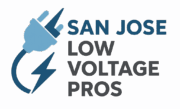What is the Difference Between Low Voltage (LV) and High Voltage (HV)?
Introduction
Whether you’re an electrician, engineer, or a curious homeowner, you’ve probably heard the terms low voltage (LV) and high voltage (HV). While they might sound self-explanatory, these classifications have specific technical definitions set by international standards bodies such as the IEC (International Electrotechnical Commission), IEEE (Institute of Electrical and Electronics Engineers), and regulatory agencies like OSHA.
Understanding the difference between LV and HV isn’t just important for technical professionals—it’s also critical for safety, compliance, and proper system design. In this article, we’ll break down what defines LV and HV, how they are used, their key differences, and why it matters in modern electrical systems.
Whether you need expert wiring, cabling, or electrical support, San Jose Low Voltage Pros is here to help.
Table of Contents
- Official Definitions of Low Voltage (LV) and High Voltage (HV)
- Voltage Classification Standards
- Key Differences Between LV and HV
- Applications of Low Voltage Systems
- Applications of High Voltage Systems
- Safety Considerations and Risks
- Common Misconceptions
- Future Trends in LV and HV Technology
- Conclusion
- FAQs
Official Definitions of Low Voltage (LV) and High Voltage (HV)
According to IEC 60038 – Standard Voltages:
- Low Voltage (LV): 50 to 1,000 volts AC or 120 to 1,500 volts DC
- High Voltage (HV): Above 1,000 volts AC or 1,500 volts DC
- Extra-Low Voltage (ELV): Below 50 volts AC or 120 volts DC
The IEEE and NEC (National Electrical Code) in the U.S. align with similar classifications, though terminology may vary slightly.
👉 Key point: Low voltage doesn’t mean “safe voltage.” It simply refers to a classification for electrical systems.
Voltage Classification Standards
Different organizations define LV and HV to ensure consistency across industries:
- IEC (International Electrotechnical Commission): Sets global classifications for AC/DC systems.
- IEEE: Provides standards for electrical engineering practices worldwide.
- NFPA (National Fire Protection Association): Defines wiring safety under the NEC.
- OSHA (Occupational Safety and Health Administration): Establishes U.S. workplace safety rules for electrical systems.
- EU Low Voltage Directive (2014/35/EU): Governs electrical equipment operating between 50–1,000V AC and 75–1,500V DC.
Key Differences Between LV and HV
| Aspect | Low Voltage (LV) | High Voltage (HV) |
|---|---|---|
| Voltage Range | 50–1,000V AC / 120–1,500V DC | Above 1,000V AC / 1,500V DC |
| Applications | Residential wiring, commercial buildings, lighting, electronics | Power transmission, substations, industrial equipment |
| Safety Risk | Electrical shock, burns, fire risks | Severe shocks, arc flash, higher risk of fatal accidents |
| Equipment Used | Standard circuit breakers, insulated wiring, consumer devices | Specialized switchgear, insulators, protective relays |
| Installation Costs | Lower, suitable for households and offices | Higher, requires advanced engineering and safety infrastructure |
Applications of Low Voltage Systems
Low voltage systems are common in everyday life and are essential for:
- Residential electricity: Standard outlets (120V in North America, 230V in Europe).
- Lighting systems: LED fixtures and indoor/outdoor lighting.
- Telecom and networking: Telephone lines, data cabling, and Wi-Fi routers.
- Security systems: CCTV cameras, alarms, access control.
- Smart home devices: IoT, thermostats, and home automation systems.
- Renewable energy: Solar photovoltaic panels often operate in low voltage ranges.
While most standards classify anything below 1,000V as low voltage, there are specific thresholds you may want to review, such as whether 3.3 kV is considered low voltage.
Applications of High Voltage Systems
High voltage is mainly used where large amounts of power must be transmitted or distributed efficiently:
- Power transmission lines: Carry electricity across cities and countries.
- Industrial equipment: Motors, generators, and furnaces.
- Railway systems: Electrified train lines often use HV for long-distance efficiency.
- Medical devices: X-ray machines and radiation equipment.
- Renewable energy grids: Large wind turbines and high-capacity solar farms.
Safety Considerations and Risks
- Low Voltage Risks:
- Electric shock and burns
- Short circuits causing fires
- Equipment damage from overloading
- High Voltage Risks:
- Arc flash explosions
- Fatal shocks
- Higher insulation and clearance requirements
- Greater occupational hazards for workers
Safety Measures for Both LV and HV:
- Following NEC, IEC, and OSHA safety codes
- Using personal protective equipment (PPE)
- Employing ground-fault protection systems
- Routine inspections and compliance checks
Common Misconceptions
- “Low voltage is safe.” → False. Even 120V can be fatal in certain conditions.
- “High voltage only applies to power lines.” → False. It’s also used in industries, railways, and medical equipment.
- “LV and HV systems are interchangeable.” → False. Each has unique design, equipment, and safety requirements.
Future Trends in LV and HV Technology
- Low Voltage Trends:
- Growth in smart home adoption and IoT devices
- Expansion of renewable energy systems
- Low-voltage DC microgrids for energy efficiency
- High Voltage Trends:
- HVDC (High Voltage Direct Current) transmission lines for long-distance energy efficiency
- Integration of large-scale renewable energy into the grid
- Advanced insulation and arc suppression technologies
Understanding the main causes of low voltage is essential to prevent electrical failures and equipment damage.
Conclusion
The difference between low voltage (LV) and high voltage (HV) lies not just in numbers but in applications, safety requirements, and infrastructure needs. LV is ideal for everyday systems like homes, offices, and consumer devices, while HV powers industrial operations and long-distance energy transmission.
Understanding these distinctions ensures better safety, compliance, and smarter energy use—whether you’re wiring a home or building tomorrow’s smart grid.
